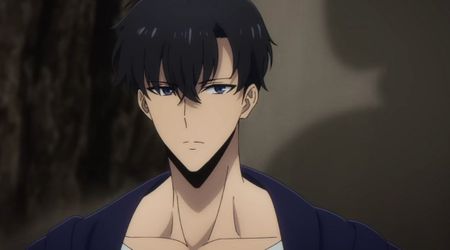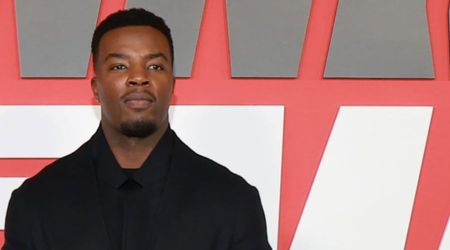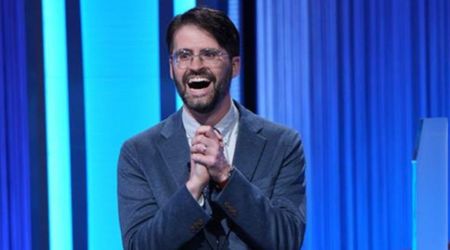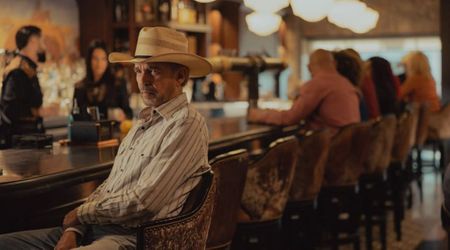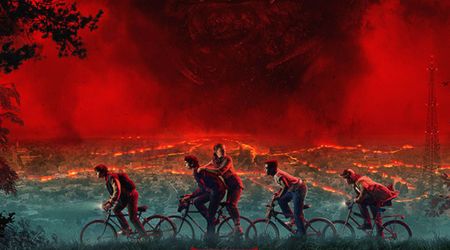'X-Men' #7 Review: The Crucible leads Kurt to start a mutant religion in a beautiful, discomforting issue

Spoiler alert for 'X-Men' #7
The 'House of X' and 'Powers of X' series that began this new Krakoan era of X-Men marked certain issues in their reading list in red, signifying a major gamechanger.
If they had continued that tradition through the 'Dawn of X' line, this issue would most definitely have earned that red label, because it represents a pretty major turning point for the X-Men, introducing some potentially uncomfortable topics that push the limits of how different, strange and new the Krakoan society is becoming.
To quickly recap, this extra-sized issue introduces the concept of the Crucible — a way for mutants depowered by M-Day to get their powers back. A resurrected mutant comes back with their powers intact, but with millions of mutants having lost their powers, it would take years before the Five could bring back everyone.
So the idea of the Crucible was formed — a depowered mutant who wants their powers back has to fight for them — to the death. Once dead, they are brought back, their powers fully restored to them in all their glory.
The Crucible — and the very concept of being able to bring mutants back to life indefinitely has Kurt asking himself some deeply spiritual questions. At the end of the issue, Kurt makes his decision: it's time to start a mutant religion.
The issue is Leinil Yu at his finest, working with Sunny Gho on colors. Yu’s art has always brought emotional weight to everything he draws. It is why earlier, more lighthearted issues he's drawn felt so off. Yu’s art is best when it’s taken seriously — and the more serious, the better.
The comic is touching on some very serious, and sensitive issues. It’s looking at moral and religious philosophy through an impossible lens and is asking some very important questions.
The ethics of suicide take on a whole different meaning when the person is dying with the express purpose of coming back to life immediately. Through Nightcrawler, Hickman is asking some very heady questions that have zero clear, or easy answers. In other words, this issue could have been exhausting.
Leinil Yu gives his panels a lot of room to breathe. Despite how word-heavy the issue is, they’re balanced with the artwork magnificently. The Crucible itself is meant to have an air of ritual about it, and that’s well captured.
Apocalypse and Melody Guthrie fight in daylight gloriously colored by Sunny Gho, and each swing, each hit, feels like another iconic step in the ritual. It’s an action scene that has all the weight and deliberateness of a ceremony.
Most of the issue is spent outdoors, and Yu has a very strong sense of what makes Krakoa work as a paradise. Whether it’s a space station on the moon, a sunny gladiator pit, or a wide view of Krakoan infrastructure, Krakoa feels like a living, breathing and breathtaking place.
The colors help keep each area visually distinct, and the art uses daylight to great effect in creating a sense of spiritual wonder, and peace.
Nobody is entirely comfortable with Crucible, despite everyone on the Quiet Council having agreed to it. Not even Apocalypse, ever the champion of mutantkind, who has to deal the killing blow.
One gets the sense that the issues that Kurt is bringing up are only scratching the surface of the complications being brought about by mutant resurrections - something that’s going to be further explored in the upcoming ‘X-Factor.’
Crucible is a controversial concept, that feels like Krakoan society might just be evolving faster than morality can keep up with. Hickman is clearly aware of how controversial it is, and builds the concept up slowly, with a sense of gentleness, and doubt.
It's an uncomfortable issue, and it no doubt was meant to be. It’s an issue that sets out to answer the question, "Why is Kurt starting a mutant-based religion?"
It answers that particular question wonderfully. As for all the other questions that the issue brings up, however, that seems to, for the moment, be left up to the readers to decide.
Religions aren’t built in a day, and Kurt has a long way to go before he can figure out exactly what that will look like. It's a powerful issue, that shows that the weird science the X-Men are being given a lot more thought, despite resurrections being a comic book staple for decades.
Hickman forces the conversation with the Crucible and giving resurrections this kind of weight means that the X-Men are moving towards a major conceptual shift - one that can't be introduced as suddenly as Krakoa was.
'X-Men' #7 was written by Jonathan Hickman, with art by Leinil Francis Yu, colors by Sunny Gho, lettering by VC's Clayton Cowles, and design by Tom Muller. The next issue releases March 11, wherever comic books are sold.

